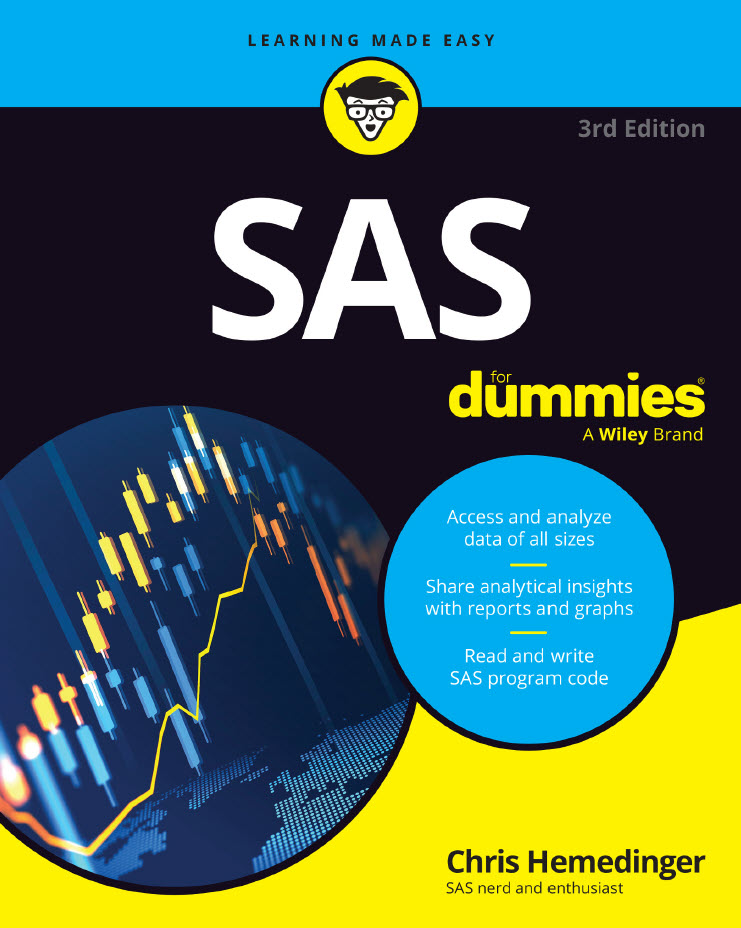
Introducing the new third edition of SAS For Dummies, covering SAS 9.4, SAS Viya, SAS Visual Analytics, SAS Viya Workbench and more!

Introducing the new third edition of SAS For Dummies, covering SAS 9.4, SAS Viya, SAS Visual Analytics, SAS Viya Workbench and more!

If you have ever needed to score a multiple-choice test, this blog is for you. Even if you are not planning to score a test, the techniques used in this example are useful for many other programming tasks. The example I am going to present assumes the answer key and
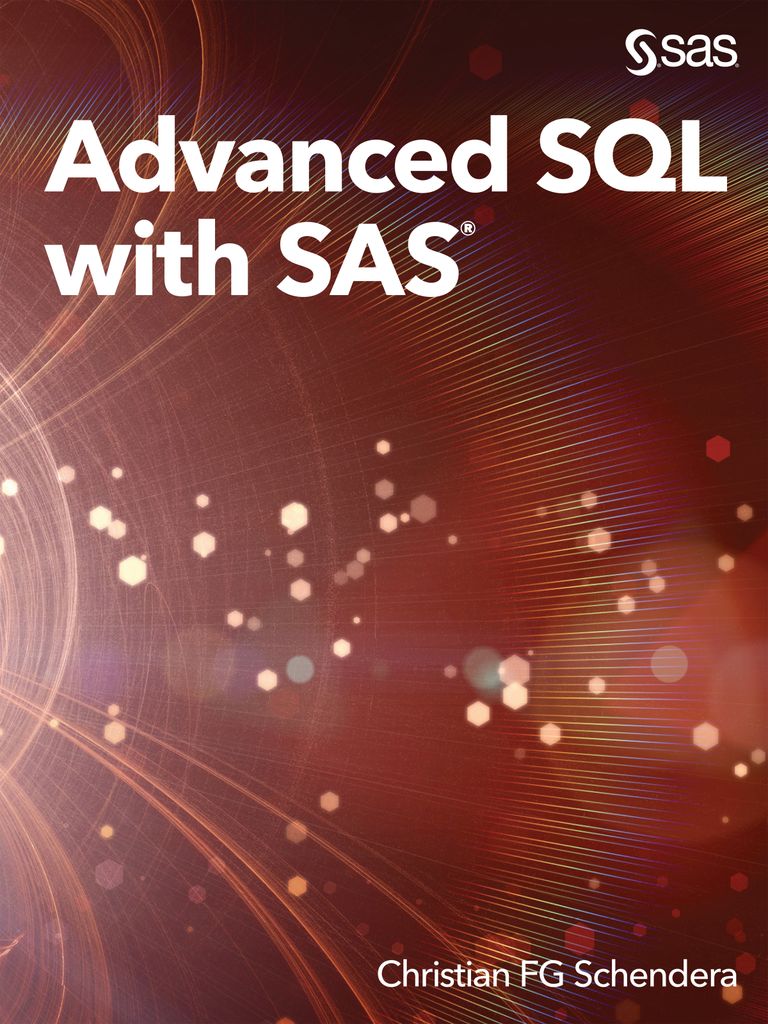
SAS SQL handles missing values differently than the ANSI standard for SQL. PROC SQL follows the SAS convention for handling missing values: numerical missing values are always interpreted as less or smaller than all nonmissing values. My first blog showed that missing values can be troublemakers in non-grouped descriptive statistics.
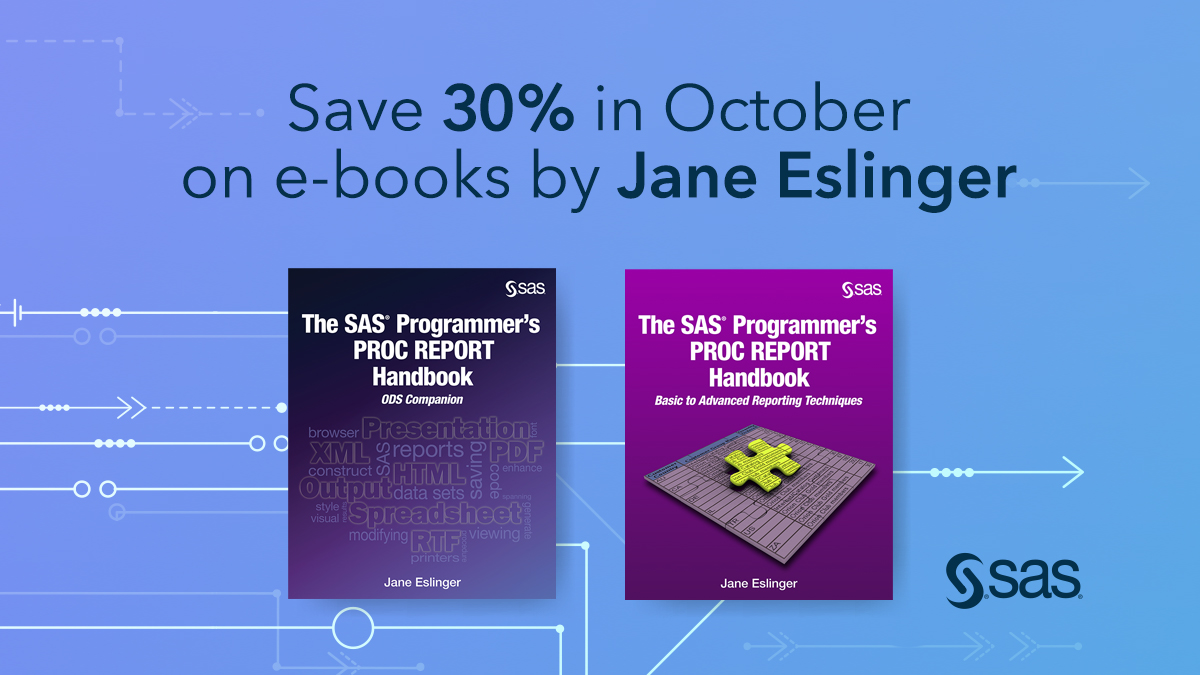
We publish a lot of books by SAS experts at SAS Press, but how does someone become an expert in the first place? Becoming certified is one step, but who develops the certifications in the first place? Those are the true experts. They have to have a deep understanding of

Recently, the SAS Press team moved to a new building on the SAS campus. And when the SAS Press team moves, we bring a lot of books with us! Packing and organizing all of our books gave us a chance to appreciate all of our authors’ hard work during the

SQL (Structured Query Language) is the most widely used programming language for relational databases worldwide. No other programming language produces more hits for a web search than SQL and interest is growing rapidly. In June 2010, Google showed 135 million hits versus 586 million hits in June 2020. SQL is

Have you ever heard something referred to as the bee’s knees? Most likely the person uttering that expression meant that it was truly amazing and extraordinary. Maybe you stopped and pondered the origin of the phrase. Well wonder no more! In the 1920s in the United States, people were obsessed

This blog serves two purposes: the main purpose is to show you some useful SAS coding techniques, and the second is to show you an interesting method of creating a Beale cipher. TJ Beale is famous in Virginia for leaving behind three ciphers, supposedly describing the location of hidden gold

Last year, I wrote a blog demonstrating how to use the %Auto_Outliers macro to automatically identify possible data errors. This blog demonstrates a different approach—one that is useful for variables for which you can identify reasonable ranges of values for each variable. For example, you would not expect resting heart
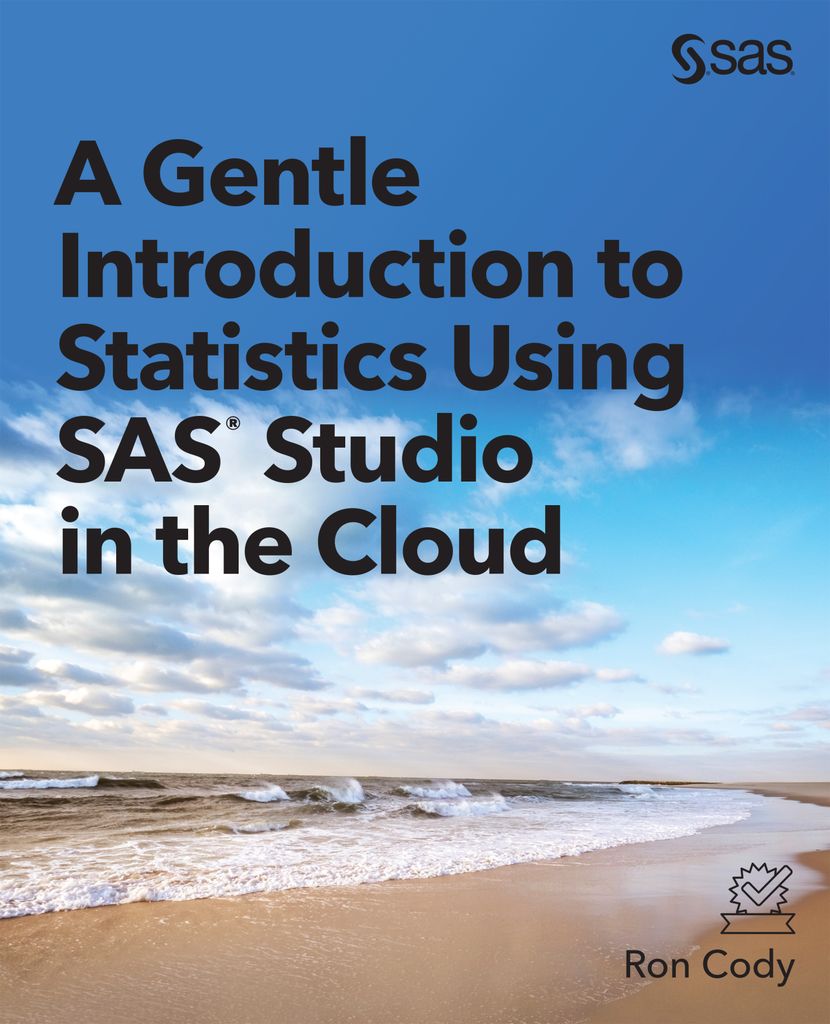
Because it is near the end of the year, I thought a blog about "Summarizing" data might be in order. For these examples, I am going to use a simulated data set called Drug_Study, containing some categorical and numerical variables. For those interested readers, the SAS code that I used
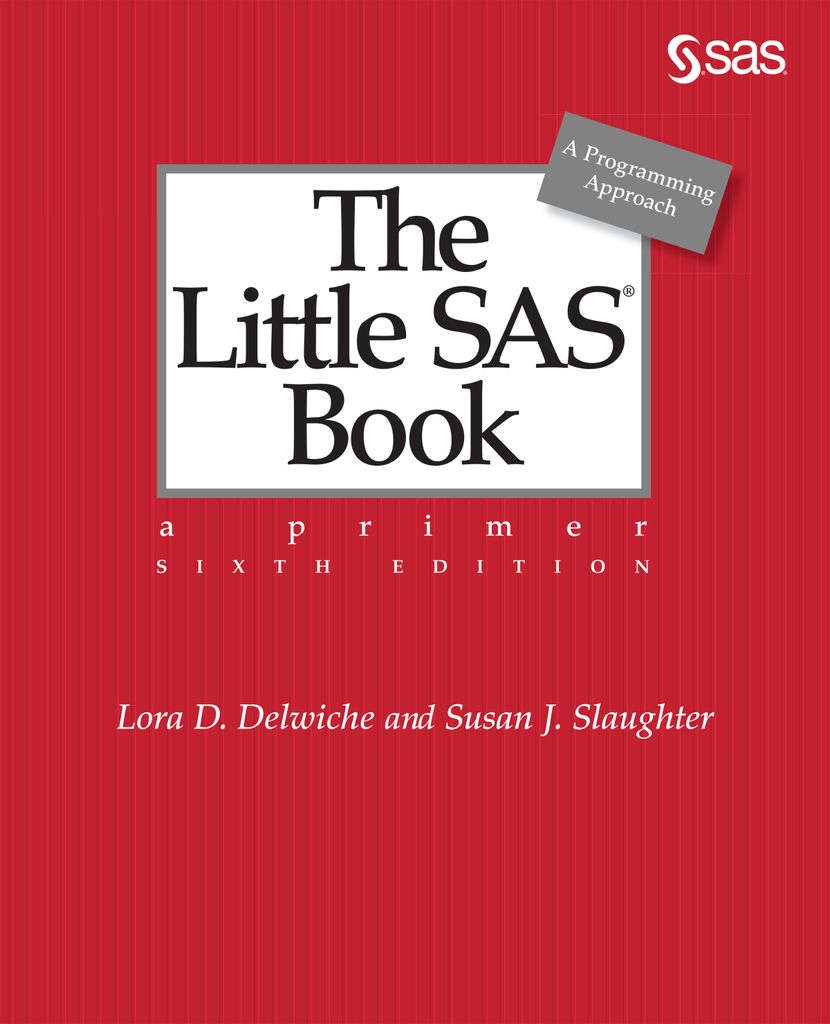
When we wrote the sixth edition of The Little SAS Book: A Primer, one of our goals was to write it for all SAS programmers regardless of which interface they use for coding: SAS Studio, SAS Enterprise Guide, the SAS windowing environment, or batch. This is harder than it sounds.

The Day of the Programmer is not enough time to celebrate our favorite code-creators. That’s why at SAS, we celebrate an entire week with SAS Programmer Week! If you want to extend the fun and learning of SAS Programmer Week year-round, SAS Press is here to support you with books

In the past, the COMPRESS function was useful. Since SAS version 9, it has become a blockbuster, and you might not have noticed. The major change was the addition of a new optional parameter called MODIFIERS. The traditional use of the COMPRESS function was to remove blanks or a list
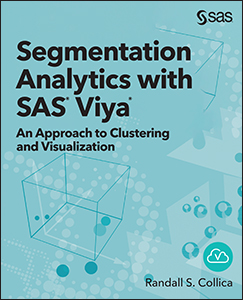
In my new book, I explain how segmentation and clustering can be accomplished in three ways: coding in SAS, point-and-click in SAS Visual Statistics, and point-and-click in SAS Visual Data Mining and Machine Learning using SAS Model Studio. These three analytical tools allow you to do many diverse types of
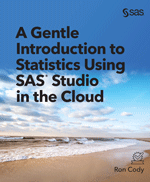
In SAS Studio, the ordering of rows and columns in the Table Analysis task are, by default, arranged by the internal ordering of the values used in the table. The table arranges the variables alphabetically or numerically by increasing value. For example, traditional coding uses 1 for Yes and 0
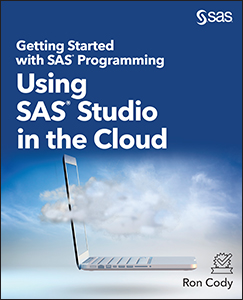
The more I use SAS Studio in the cloud via SAS OnDemand for Academics, the more I like it. To demonstrate how useful the Files tab is, I'm going to show you what happens when you drag a text file, a SAS data set, and a SAS program into the
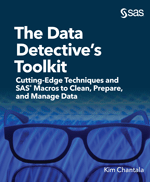
SAS Press author Kim Chantala shows you how to to spend less time preparing data so you can lavish time on analysis.
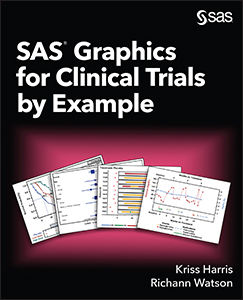
Do you need to see how long patients have been treated for? Would you like to know if a patient’s dose has changed, or if the patient experienced any dose interruptions? If so, you can use a Napoleon plot, also known as a swimmer plot, in conjunction with your exposure

The following is an excerpt from Cautionary Tales in Designed Experiments by David Salsburg. This book is available to download for free from SAS Press. The book aims to explain statistical design of experiments (DOE) to readers with minimal mathematical knowledge and skills. In this excerpt, you will learn about
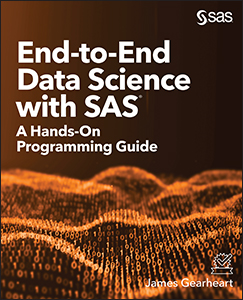
Decision trees are a fundamental machine learning technique that every data scientist should know. Luckily, the construction and implementation of decision trees in SAS is straightforward and easy to produce. There are simply three sections to review for the development of decision trees: Data Tree development Model evaluation Data The
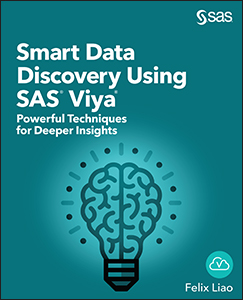
Analytics is playing an increasingly strategic role in the ongoing digital transformation of organizations today. However, to succeed and scale your digital transformation efforts, it is critical to enable analytics skills at all tiers of your organization. In a recent blog post covering 4 principles of analytics you cannot ignore,
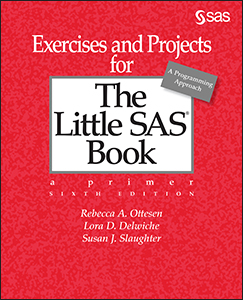
The most fundamental concept that students learning introductory SAS programming must master is how SAS handles data. This might seem like an obvious statement, but it is often overlooked by students in their rush to produce code that works. I often tell my class to step back for a moment

In my new book, End-to-End Data Science with SAS: A Hands-On Programming Guide, I use the 1.5 IQR rule to adjust multiple variables. This program utilizes a macro that loops through a list of variables to make the necessary adjustments and creates an output data set. One of the most
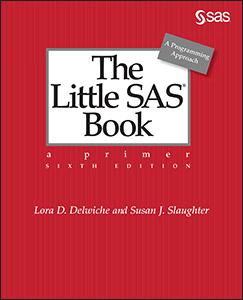
Whether you enjoy debugging or hate it, for programmers, debugging is a fact of life. It’s easy to misspell a keyword, scramble your array subscripts, or (heaven forbid!) forget a semicolon. That’s why we include a chapter on debugging in The Little SAS® Book and its companion book, Exercises and

If you have been using SAS for long, you have probably noticed that there is generally more than one way to do anything. (For an example, see my co-author Lora Delwiche’s blog about PROC SQL.) The Little SAS Book has long covered reading and writing Microsoft Excel files with the

Have you heard that SAS offers a collection of new, high-performance CAS procedures that are compatible with a multi-threaded approach? The free e-book Exploring SAS® Viya®: Data Mining and Machine Learning is a great resource to learn more about these procedures and the features of SAS® Visual Data Mining and

Do you wish you could predict the likelihood that one of your customers will open your marketing email? Or what if you could tell whether a new medical treatment for a patient will have a better outcome than the standard treatment? If you are familiar with propensity modeling, then you

In case you missed the news, there is a new edition of The Little SAS Book! Last fall, we completed the sixth edition of our book, and even though it is actually a few pages shorter than the fifth edition, we managed to add many more topics to the book.

In honor of Valentine’s day, we thought it would be fitting to present an excerpt from a paper about the LIKE operator because when you like something a lot, it may lead to love! If you want more, you can read the full paper “Like, Learn to Love SAS® Like”

One of the first and most important steps in analyzing data, whether for descriptive or inferential statistical tasks, is to check for possible errors in your data. In my book, Cody's Data Cleaning Techniques Using SAS, Third Edition, I describe a macro called %Auto_Outliers. This macro allows you to search